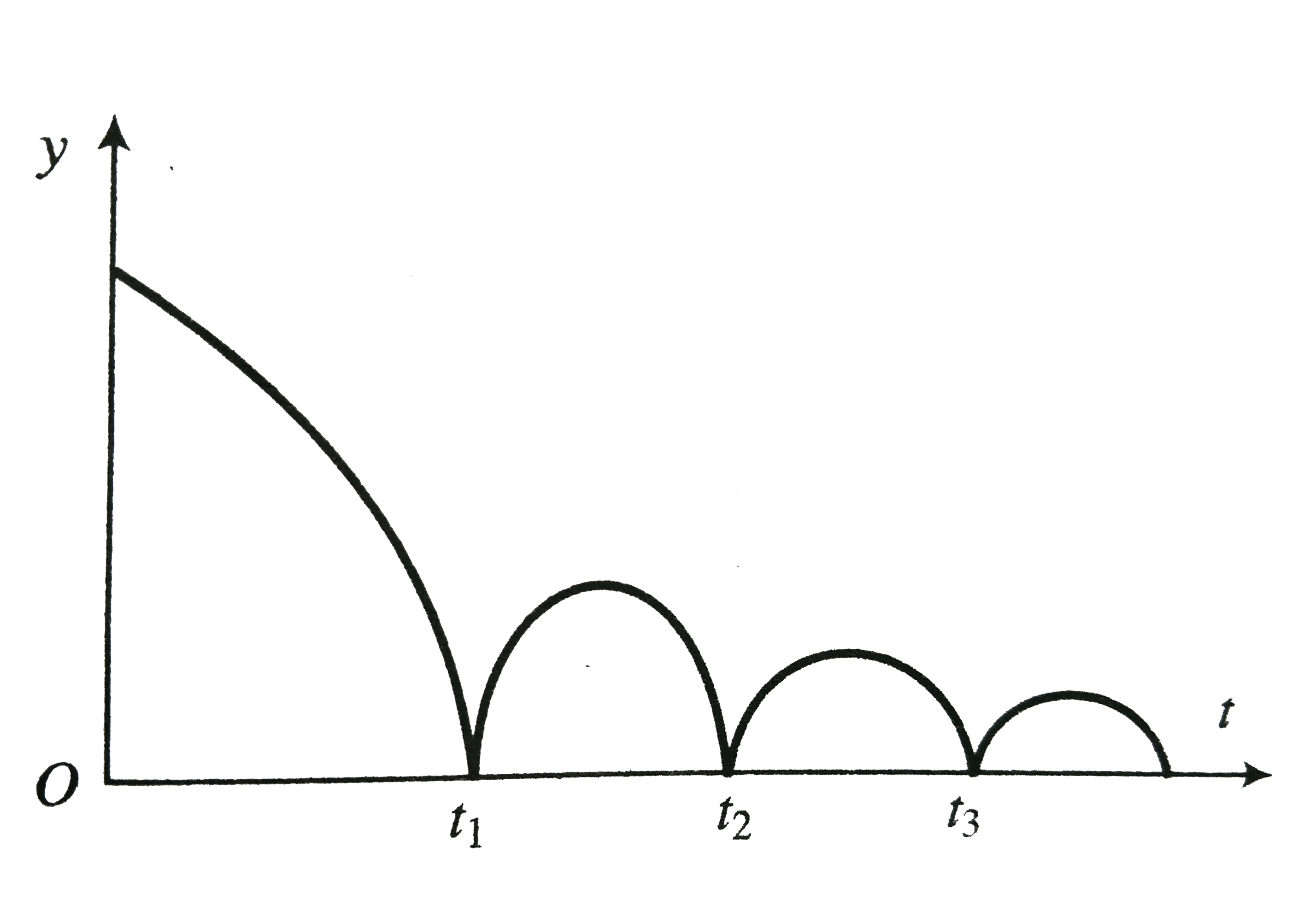The graph as shown in. below descrines the motion of a ball rebounding from a horizontal surface being released from a point above the surface. Assume that the ball colledes each time with the floor inelastically. The quantity represented on the y-axis in the is the balls (take upward direction as positive)
 .
.
Displacement
Velocity
Acceleration
Momentum
The correct Answer is:A
We know that for a body throun up, its displacement is gimen as S=ut−12gt2. So the s−t graph is parabolice downwards,
Also the ball collides inelastically, so it will revound to hass height every time as shown in the graph t1,t2, t3, are the instants when the ball colledes with ground, Here slope of the s−t graph is suddenly changing from negatibe (downwrds) and agter collision is positive (upwards).
Topper's Solved these Questions
- KINEMATICS-1BOOK - CENGAGE PHYSICSCHAPTER - KINEMATICS-1EXERCISE - Graphical cancept
1 Videos
- KINEMATICS-1BOOK - CENGAGE PHYSICSCHAPTER - KINEMATICS-1EXERCISE - Multiple Correct
16 Videos
- KINEMATICS-1BOOK - CENGAGE PHYSICSCHAPTER - KINEMATICS-1EXERCISE - Single Correct
52 Videos
- GRAVITATIONBOOK - CENGAGE PHYSICSCHAPTER - GRAVITATIONEXERCISE - INTEGER_TYPE
1 Videos
- KINEMATICS-2BOOK - CENGAGE PHYSICSCHAPTER - KINEMATICS-2EXERCISE - Exercise Integer
9 Videos
Similar Questions
.A ball is projected upwards from a height h above the surface of the earth with velocity v .The time at which the ball strikes the ground is
View SolutionConsider the child standing on the top of a tower of height h, shown in figure-l .12. He throws the ball up and the ball follows the trajectory as shown in figure. Draw the displacement versus time graph of the ball's motion during its flight. Take vertically upwards direction as positive x-axis.

View Solution
Knowledge Check
Motion of a ball bearing inside a smooth curved bowl, when released from a point slightly above the lower point is
Asimple harmonic motionBnon-periodic motionCperiodic motionDperiodic but not S.H.M.Motion of a ball bearing inside a smooth curved bowl, when released from a point slightly above the lower point is
Asimple harmonic motionBnon-periodic motionCperiodic motionDperiodic but not SHMA ball is projected upwards from a height h above the surface of the earth with velocity v. The time at which the ball strikes the ground is
Avg+2hg√2Bvg[1−√1+2hg]Cvg[1+√1+2ghv2]Dvg[1+√v2+2hh]
A ball is thrown horizontally at a speed v0 from the top of a hill whose slope is a (to the horizontal). Assuming the ball's impact on the hill's surface to be elastic find the point where it will hit the hill the second time.
View SolutionA ball is thrown straight upward with a speed v from a point h meter above the ground. The time taken for the ball to strike the ground is
View SolutionA ball thrown vertically upward with initial velocity u. Which of the following graphs represent the velocity of ball correctly as function of time?
(Take upward direction as positive)
View SolutionA rigid ball rolls without slipping on a surface shown below.

Which one of the following is the most likely representation of the distance traveled by the ball vs time graph?
View SolutionTwo balls of same mass are released simultaneously from heights h & 2h from the ground level. The balls collide with the floor & stick to it. Then the velocity-time graph of centre of mass of the two balls is best represented by :
View Solution
